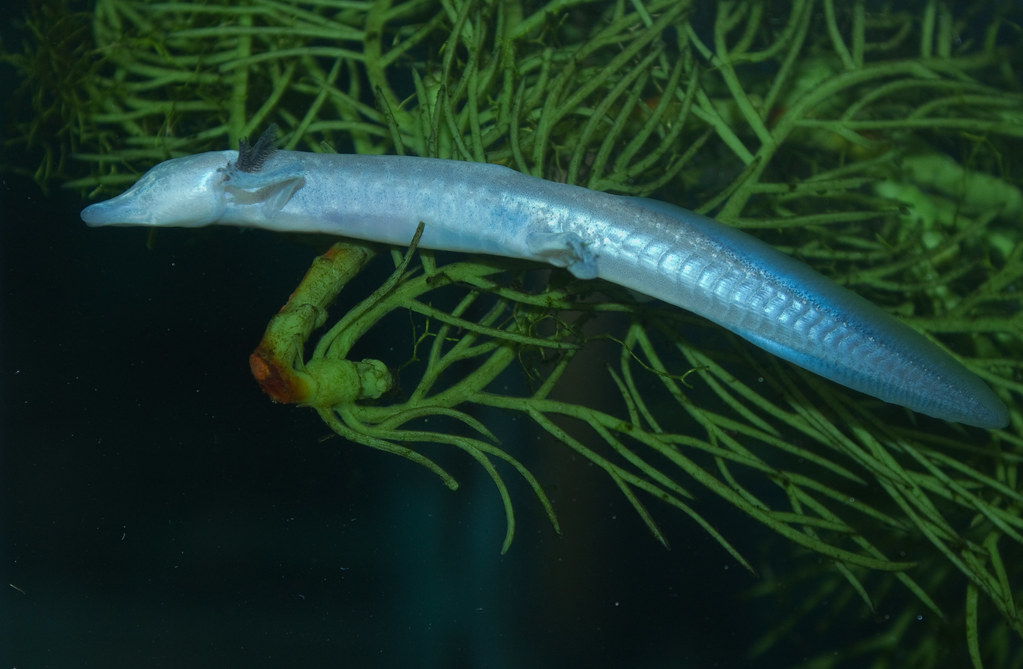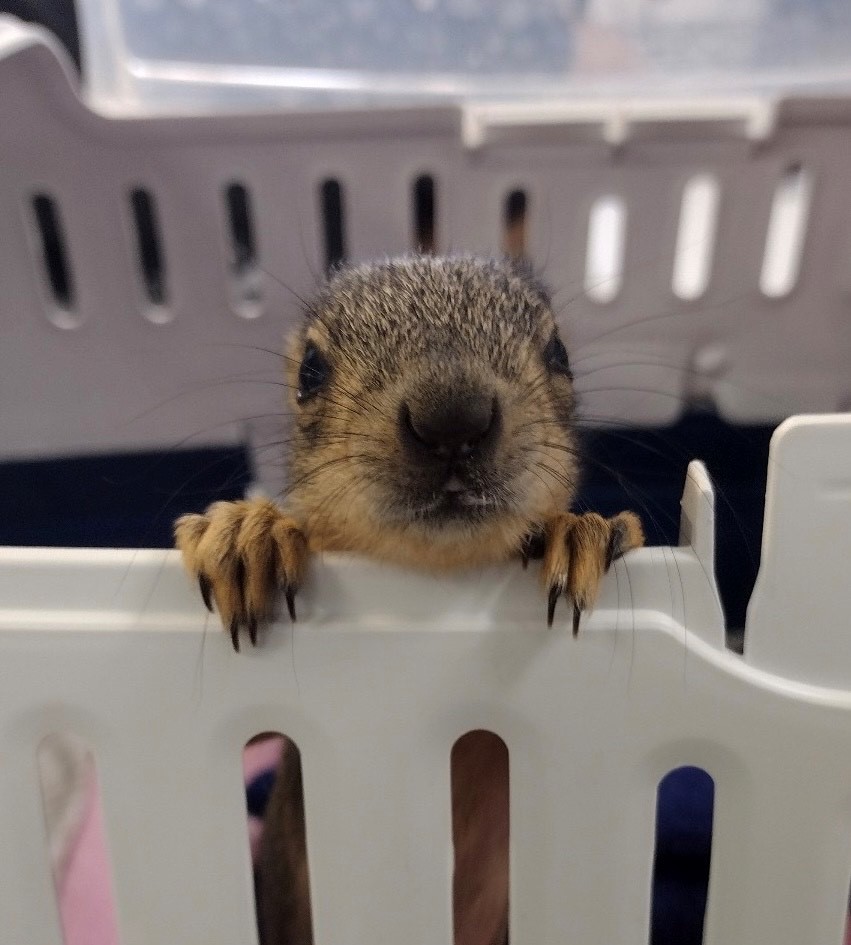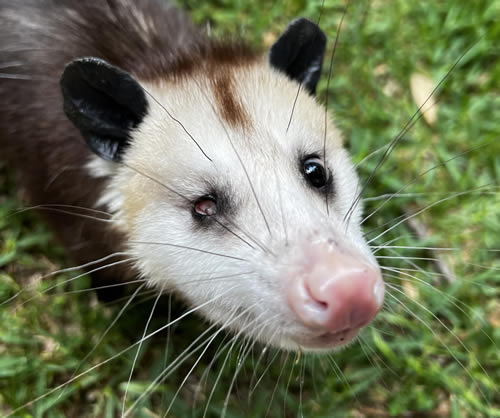
By Deb Near, Animal Care Program Supervisor
Photo credit: Brian Gratwicke
At TWRC Wildlife Center, conservation is the name of the game! We exist to educate the public about environmental conservation, how it relates to our native wildlife, and why it is so important. This month, we are bringing awareness about local (Texas) endangered species!
There are some well-known endangered species that everyone has a passing familiarity with: the ocelot, the Texas horned lizard, the Houston toad, just to name a few. But what about some of the lesser known species? Ones that you rarely, if ever, hear about?
Let’s start with one that has a rather unique and catchy name: the Guadalupe fatmucket. Yes, this is a real thing! Does anyone have any idea what sort of animal this is? Want to take a guess? Read on for the surprising answer!
The Guadalupe fatmucket (Lampsilis bergmanni) is a freshwater mussel found only in the Guadalupe river basin in central Texas. It used to be classified as the Texas fatmucket (Lampsilis bracteata) but it is now known to be a separate species. They are important because they act as a canary in the coal mine, testing the health of freshwater systems and giving us clues when things aren’t quite right. When their numbers decline, that is an indication of reduced water quality. They feed by filtering out contaminants, thereby helping to keep the water clean.
Another interesting, lesser known species is the Texas blind salamander (Eurycea rathbuni). This amphibian has a very limited range; it only lives in caves of the Edwards Aquifer near San Marcos, Texas. Since it lives only underwater, where very little light penetrates, it has no eyes and very little skin pigment. Amphibians in general are quite sensitive to changes in the environment due to such things as pollution from pesticides, and this salamander is no exception; it is endangered primarily due to pollution of its limited water supply. Its environmental importance lies in the fact that it is the main predator for its ecosystem, at the top of its food chain.
The Mexican long-nosed bat (Leptonycteris nivalis) is another species that has found itself threatened. It is important as a pollinator for desert scrub environments, especially existing in relationship to the agave, or century plant, as well as various cacti. They winter in Mexico, moving up north into Texas during the summer, with a large population settling in at Big Bend National Park, where they are protected. Reasons for their decline are not well-known, but there are a couple of possibilities. Perhaps agave plant harvesting has affected their food supply. Also, in a misguided effort to eliminate vampire bats, some people have taken to destroying any and all roosting sites no matter the species.
Now let’s discuss a couple of the more well-known Texas endangered species, starting with the Houston toad.
The Houston toad (Anaxyrus housteonensis) is only found in Texas. Once abundant in the Houston area, it disappeared from here during the 60’s. This happened mostly due to urban development and drought. There are currently ambitious breeding efforts going on at the Houston Zoo, where there is a population of nearly 600.
Like most amphibians, the Houston toads have narrowly specific habitat needs, making them particularly vulnerable to changes and disruptions. They spend most of their lives on land, burrowed in the sand of forested areas containing trees such as loblolly pine and post oak. For breeding, they require shallow, temporary water sources. Areas where there are permanent ponds are not conducive, since that increases the presence of predators such as fish, snakes, and other wetland critters. It also increases competition and hybridization. Also, pollutants such as pesticides have made them more vulnerable as well.
For all the bird lovers out there, here is the mention you’ve been waiting for: the most endangered bird in Texas, Attwater’s prairie chicken (Tympanuchus cupido). Contrary to its name, it is not a chicken, but a member of the grouse family. There used to be over a million in the wild; now, there are less than 200. Despite this sobering statistic, the numbers are recently making a comeback, which is a hopeful indication for their future.
The decline of this bird is not surprising, given that its habitat – the prairie – is the most endangered ecosystem in Texas. Only 1 – 2 percent of original prairie habitat remains. This is largely due to two things: urban development, and the encroachment of woody plants as the result of fire suppression efforts. One of these woody plants is the Chinese Tallow, an invasive species that has taken over much of the prairie chicken’s domain.
This bird’s mating ‘dance’ is quite important culturally, since it is inspiration for many dances performed by Native Americans. The males gather in areas called ‘leks’, where they puff out their air sacs, raise their tails, and stomp their feet as they dance around,. They emit a ‘booming’ vocalization that becomes more pronounced whenever a female enters the area.
No essay on endangered Texas species would be complete without Texas’s state reptile: the Texas horned lizard (Phrynosoma cornutum), also known as the horny toad. They exist in arid environments and subsist mostly on red harvester ants. Their unique defensive strategies include the horns on their head, their unique camouflage, and the ability to shoot blood out of their eyes. Pretty scary, right??
What’s even scarier is their virtual disappearance from the eastern third of the state, now mostly inhabiting dry areas to the west of Austin. Their diet of harvester ants has declined drastically due to both pesticides and invasive fire ants. Urban sprawl also has destroyed habitat, along with the introduction of nonnative plants such as bermuda grass, planted for livestock feed and crowding out the lizard. There are some projects at various zoos attempting to breed and reintroduce the Texas horned lizard. This can be difficult, given their specific needs with regard to temperature, moisture, and lighting.
If we want these animals, all unique in their own way, to stick around for decades to come, then we have to make sure to take our stewardship of the environment seriously. Support local policies that make conservation a priority. Learn ways to co-exist with wildlife to the betterment of both the animals and humanity. Donate your time or money to causes that promote environmental conservation. In the process, we all win!


